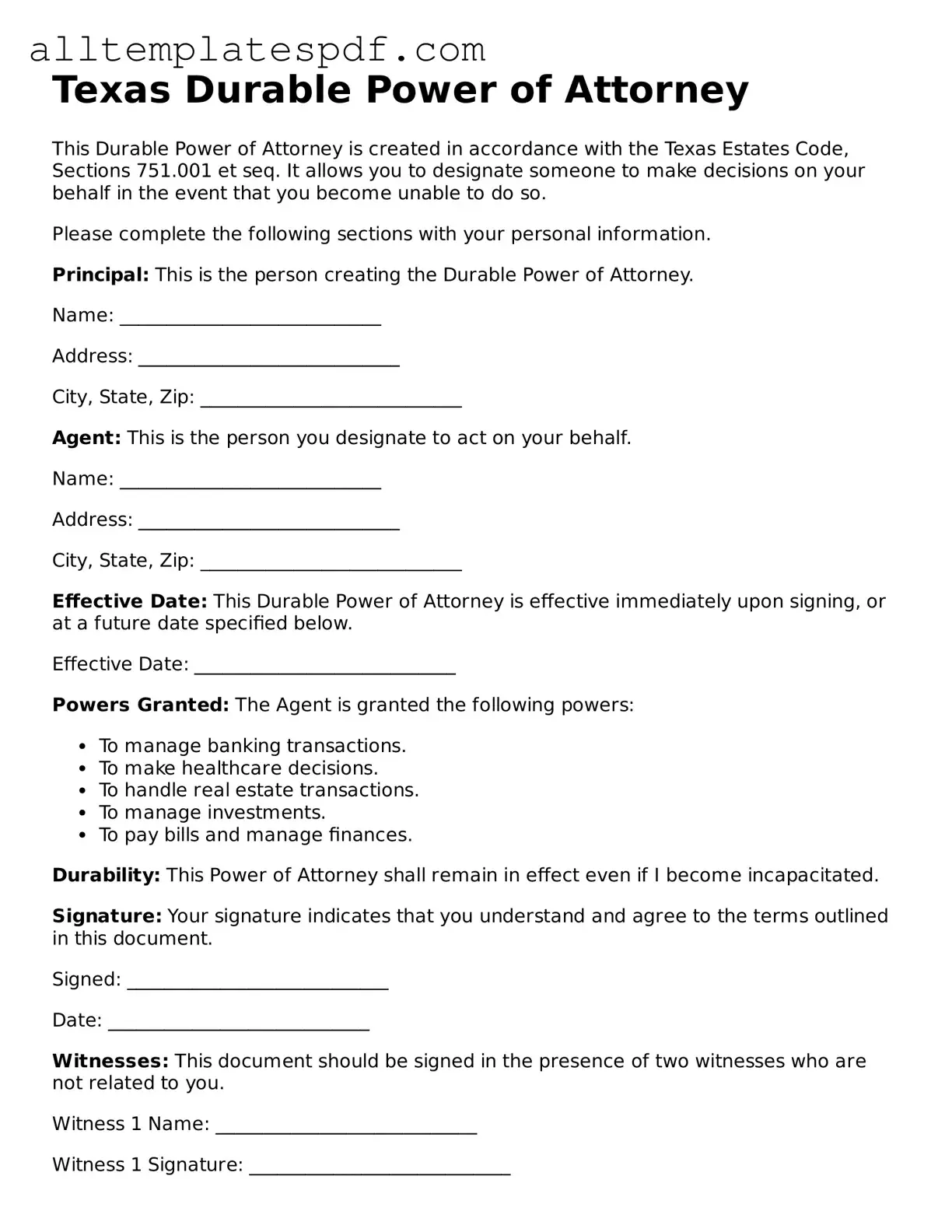Filling out a Texas Durable Power of Attorney form can be straightforward, but several common mistakes can lead to complications. One frequent error is not specifying the powers granted to the agent. It's essential to clearly outline what decisions your agent can make on your behalf. If the powers are vague or too broad, it may lead to confusion or disputes later on.
Another mistake is failing to sign the document properly. The Texas Durable Power of Attorney must be signed by the principal (the person granting the authority) in the presence of a notary public. If this step is overlooked, the document may not be valid, rendering it ineffective when needed.
Many individuals also neglect to date the form. A date is crucial as it establishes when the authority begins. Without a date, there could be questions about the timing of the powers granted, which may complicate matters for both the principal and the agent.
Additionally, some people forget to choose a backup agent. Life is unpredictable, and the primary agent may not always be available to act. By designating a secondary agent, you ensure that your wishes can still be honored even if the first choice is unable to fulfill their role.
Another common oversight is not discussing the decision with the chosen agent beforehand. It's important that the agent understands their responsibilities and is willing to accept the role. A lack of communication can lead to misunderstandings and may result in the agent not being prepared to act when the time comes.
People often make the mistake of not reviewing the form after completion. It's advisable to double-check for any errors or omissions. Even minor mistakes can lead to significant issues down the line, so careful review is essential.
Furthermore, failing to keep the document in a safe and accessible location is a mistake many make. The Durable Power of Attorney should be stored where it can be easily found by your agent and family members. If the document is misplaced, it may not be usable when needed.
Finally, some individuals forget to update the form when their circumstances change. Life events such as marriage, divorce, or the birth of a child can impact your choices. Regularly reviewing and updating your Durable Power of Attorney ensures that it reflects your current wishes and circumstances.
